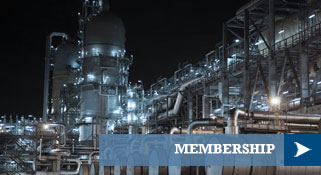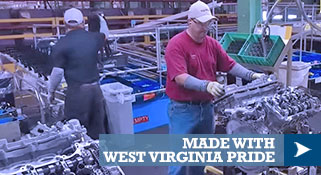- Details
All four major party candidates for governor of West Virginia appeared on the same stage Thursday to talk about economic development, the state budget and their visions for the state. Former U.S. Attorney Booth Goodwin, businessman Jim Justice, state Senate Minority Leader Jeff Kessler and state Senate President Bill Cole all spoke, separately, at the West Virginia Manufacturer’s Association convention at the Charleston Civic Center.
- Details
West Virginia has a large supply of natural gas, but something needs to change if the state hopes to benefit from the construction of new gas-fired power plants and petroleum-based manufacturing, according to Blue Jenkins, the executive vice president of EQT Corp.’s commercial operations.
Jenkins was the keynote speaker at the West Virginia Manufacturers Association’s Marcellus and Manufacturing Conference at the Charleston Civic Center Wednesday.
- Details
Charleston, W.Va., March 2, 2016 – The West Virginia Manufacturers Association (WVMA) will host the second annual Marcellus and Manufacturing Development Conference (MMDC) March 23-24, 2016, at the Charleston Civic Center in conjunction with the West Virginia Construction and Design Exposition. One of the region’s largest manufacturing events, it combines the former WVMA Leadership Summit and Marcellus-to-Manufacturing Conference.
“We are very excited to host the conference again this year,” said Rebecca Randolph, president of WVMA. “The feedback from combining the two events last year was very positive and shows that company representatives are excited about the opportunity to learn more and grow industry partnerships.”
This year’s event focuses on the infrastructure needed to create a regional Appalachian storage hub. Attendees will have the chance to attend several seminars covering a variety of topics including industrial demand, energy and national security, and more. U.S. Sen. Shelley Moore Capito will serve as the keynote speaker, focusing on energy policy.
- Details
A recent USA Today/Rock the Vote survey of millennials shows 80 percent of millennials support transitioning to “mostly clean” or renewable energy by 2030.
Although their hearts may be in the right place, few millennials appear to realize how much energy their lifestyles actually consume, where this energy comes from and how much it would cost to transition to a nation that’s powered predominantly by renewables by 2030.
As a millennial myself, I’m quite familiar with this phenomenon. Many of my peers don’t understand electricity doesn’t just come from the wall; email isn’t necessarily green because it isn’t printed on paper; and a lifestyle that revolves around binge-watching Netflix has a real effect on the environment.







